
Fancy tools, like AMosaic, are cool, but sometimes you need to get back to basics. Darren Irvine takes a look at FTP - a tool for which the word "basic" might have been invented.
Where to get the stuff - Rumour Mill
NcFTP - GUI-FTP - MFTP

The basic principle of operation behind FTP is simple - connect to a remote machine using a username and password, using the "cd" command to move to the directory on the remote machine that interests you, and either using "get" to retrieve a file to your own machine or "put" to transfer a file to the remote site. And that's it. OK, so there are a number of other commands available, like "dir" to (surprisingly enough) produce a directory listing, but essentially that's all there is to it.
One thing to watch out for though is to select the correct mode for transfers. Use the "type" command to set whether you are transferring ASCII files or binaries such as programs or archives. Use "type ascii" or "type bin" respectively. To be on the safe side, it doesn't do any harm to leave the transfer type set as "bin" all the time.
By far the majority of FTP operations on the Internet are to what are known as "Anonymous FTP" sites. What this means is that when presented with a username prompt, you should enter "anonymous" rather than any specific username. Some sites will also require a password entered along with "anonymous" and this password should be your own e-mail address.
The administrators of the remote site use this information to check on who has been accessing their machine. In an attempt to beef up security, an increasing number of Anonymous FTP sites now verify the entered password against the address that the remote system has detected that you are connecting from, so try and make sure you always use your genuine address.
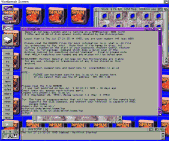 So which FTP tool should you use? If you like using the CLI and don't mind the case-sensitivity that unix systems force upon us, then the FTP tool supplied with the AmiTCP distribution may be enough for you. Called NcFTP, it's actually quite an improvement over the "standard" FTP program that comes with unix systems.
So which FTP tool should you use? If you like using the CLI and don't mind the case-sensitivity that unix systems force upon us, then the FTP tool supplied with the AmiTCP distribution may be enough for you. Called NcFTP, it's actually quite an improvement over the "standard" FTP program that comes with unix systems.
NcFTP can be set up to automatically use the "anonymous" username and your e-mail address as a password when logging in. It also makes it easy to view text files on the remote system using the "page" command. When transferring files, NcFTP implements a simple "progress meter" by displaying a row of ten dots, with each dot appearing per 10% completion of the transfer.
If you're already in the middle of using a lot of CLI based tools, using NcFTP can sometimes make sense to quickly transfer a file if you know exactly where it's located on a remote system. If on the other hand, you just want to browse around a number of remote sites, having a bit of a look around for interesting files, then the text-only approach quickly shows it's limitations and it's time to try something a bit more up to date.
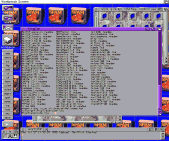
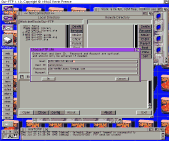 There are two main choices when it comes to throwing off the shackles of CLI-based FTP programs, and the first is Gui-FTP. You still have to use the keyboard a bit though, if only to type in the site address that you are interested in and the username and password to use when logging in. Connecting to the remote site is then only a matter of clicking on "OK".
There are two main choices when it comes to throwing off the shackles of CLI-based FTP programs, and the first is Gui-FTP. You still have to use the keyboard a bit though, if only to type in the site address that you are interested in and the username and password to use when logging in. Connecting to the remote site is then only a matter of clicking on "OK".
The rest of the FTP operation is then under mouse control, from determining the directory to use for transfers both on the remote site and your own machine, to actually selecting the desired file and initiating the transfer itself.
There are no major problems with Gui-FTP - the lack of full text mode transfer support is an annoyance rather than a real difficulty. Text files can always be transferred in binary mode, although it does mean viewing remote text files with out transferring them fully is out of the question.
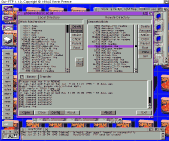
Transferring a file with Gui-FTP is a simple point and click affair.
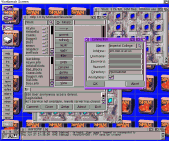 The next candidate in the NcFTP-replacement stakes is Mftp. The principle of operation is very similar to that of Gui-FTP, and Mftp has a number of advantages and disadvantages when compared to the other program.
The next candidate in the NcFTP-replacement stakes is Mftp. The principle of operation is very similar to that of Gui-FTP, and Mftp has a number of advantages and disadvantages when compared to the other program.
For a start, Mftp requires MUI - which some people regard as a blessing and some as a curse. It does make Mftp look a lot nicer than Gui-FTP, and using MUI has allowed the program's creator to add a lot more user-friendliness into the program. For a start (and this is a much more significant than you might think) Mftp allows multiple selection of files, either by clicking and dragging or by clicking whilst holding down the shift-key.
This allows you to select a whole bunch of files, click on the transfer gadget and go off and get a bottle of beer from the fridge (or whatever download-time-spending activity you prefer). With Gui-FTP you would have to sit and select each of the files you want individually and wait for them to download before selecting the next one. Another useful feature that Mftp includes is the ability to set up a database of your favourite FTP sites, including the address, and username/password required.
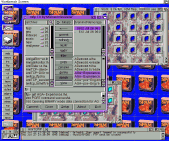
On the negative side however, the release of Mftp currently available doesn't properly support unix directory links. These are when the operator of a remote site has set up a pseudo directory path that actually references another (usually much deeper) path when accessed. It isn't too much of a problem though, as Mftp provides a requester into which you can type the desired directory and also the full text-mode FTP command set is supported in another requester
Darren Irvine
e-mail: darren@plasma.thegap.com
Fido: 2:443/13.18